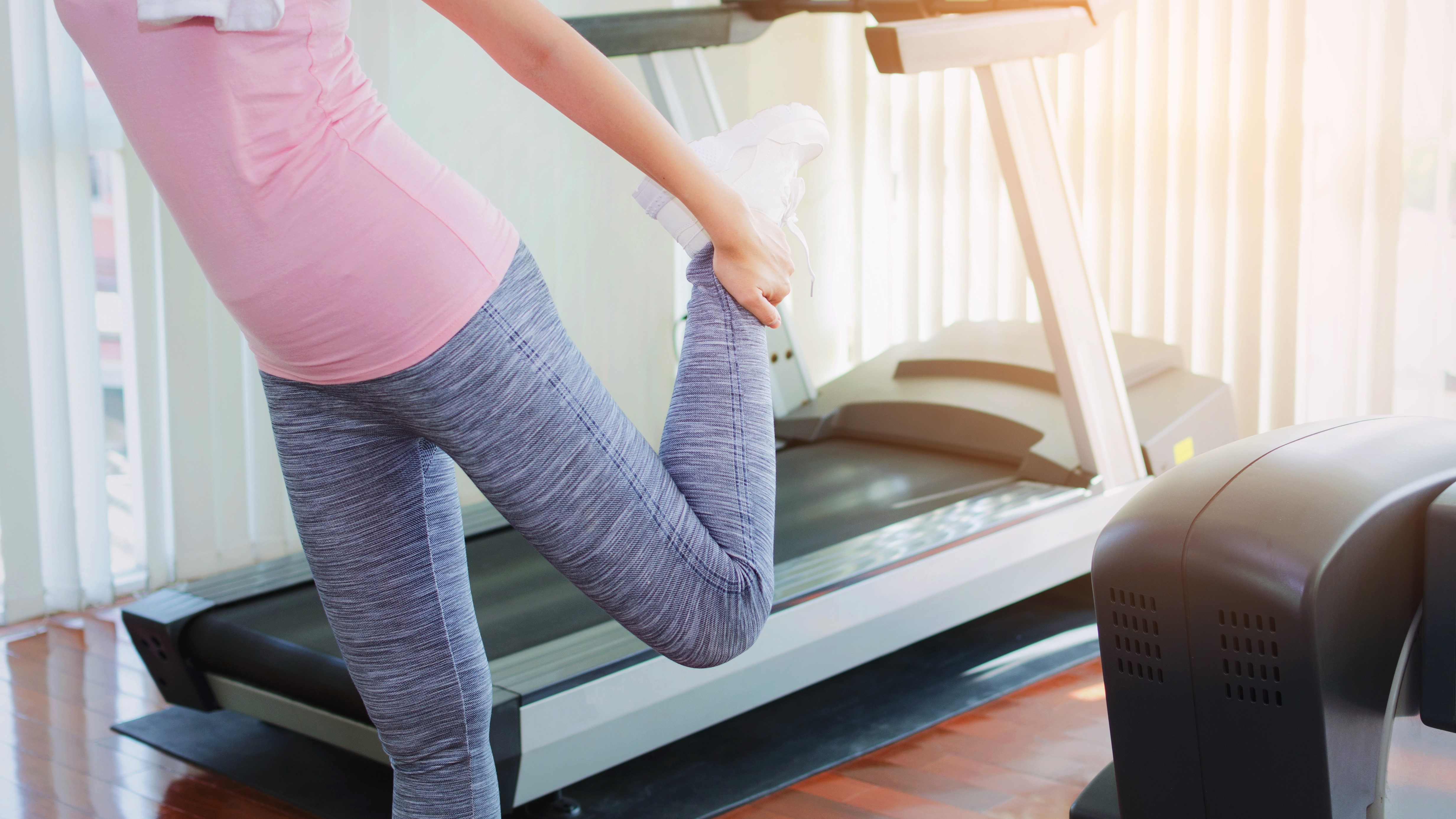Five great treadmill training sessions for beginners

Almost every gym hosts a fleet of treadmills. As an alternative to running outside or an addition to your workout, they're an efficient tool whatever your fitness goals. But how best to use them? Whether you're an experienced indoor runner or yet to step aboard, we've collected five key workouts, plus advice on how and why using a treadmill is something we can all benefit from.
Brian McClelland is an ISSA certified personal trainer with Fyt, the USA's largest personal training service. An endurance coach, he works with everyone from swimmers and runners to cyclists and hikers. As such, he's well placed to explain the difference between running indoors and outside, along with the benefits of each.
From a physiological and health standpoint, running on a treadmill and running outdoors are very similar," explains McClelland.
Yet, for the runner, there are some key differences. "On a treadmill, you have much more control over things like pacing, intensity, and level of incline," says McClelland. "You can also train any time of the year and at any time, day or night." Of course, you lose out on the stimulation of being outside, but on the plus side, you reduce external limiters like weather, temperature, traffic, or lack of daylight.
"Both options have their own benefits and limitations,” says McClelland. “But it doesn't necessarily have to be one or the other. Incorporating both options into a training plan would have positive benefits."

All running will improve your aerobic capacity, strengthen your bones, build muscles and burn calories. However, running in a controlled environment with easy access to hydration and nutrition, plus training at a consistent pace, makes indoor running ideal when following more structured training plans.
All of this means indoor running is great for achieving sessions that can be tricky outdoors. An obvious example of this is treadmills' ability to create hills for runners that live in flat areas. "If you're training for an event that has some challenging hills, doing hill repeats on an adjustable treadmill will help give you the training stimulus you need for those elevation changes," says McClelland.
Sign up for breaking news, reviews, opinion, top tech deals, and more.
Another benefit to running indoors is that you'll be far less likely to suffer a slip or twist; something particularly useful if your workout incorporates speedy sections or elongated strides.
For those less interested in running than more generally gym work, treadmills can also be a great way to bookend a workout. "Jumping on the treadmill for between five to 10 minutes at an easy pace is a great way to get the blood pumping and get the muscles warm before a workout," says McClelland.
"If you're mapping out an hour at the gym, one option to start is by spending the first five minutes doing an easy jog on a treadmill, followed by a five-minute dynamic stretching routine. If your primary strength training workout typically lasts about 30-45 minutes, maybe fit in a final five-minute cool down jog on the treadmill along with a final five-minute stretch."
Plenty of people consistently and successfully incorporate both indoor and outdoor running into their training, but there are many other forms of conditioning to choose from. Still, McClelland is a big advocate of choosing the treadmill when you're at the gym.
"It doesn't have to be every day you run on the treadmill, but it's a solid option as part of a conditioning day or as a way to help your body warm up before a strength training session," he explains. "If someone is looking for advice on the best way to incorporate running on a treadmill into their weekly training regimen, I'd recommend speaking with a fitness professional to learn why, how, and when it might be beneficial for them within their routine."
Alternatively, if you're ready to hop on, here are five of McClelland's favourite treadmill workouts.
Five great treadmill workouts
Your goal: Active recovery
The workout: A nice easy one to start with. This session is ideal for less experienced athletes or when you want to keep the legs moving without adding fatigue. Simply build to an easy pace and then maintain it for 20-45 mins depending on how you feel. No need to push either time or speed; active recovery work is perfect for when you're looking to recuperate or want to get some exercise without tiring yourself out too much.
The expert says: When doing this steady workout, your perceived exertion should be between a two and five out of 10. At this level, you should be able to hold a full conversation. You can test this by chatting with the person next to you. If you have a heart rate monitor, keep your BPM below 70% of your max heart rate. If you feel your heart rate getting away from you, walking is always OK. Relax until you're comfortable, then gradually build back up to your relaxed run pace. Do this workout repeatedly, and you should be able to run longer while maintaining a lower heart rate.
Your goal: Simulate the outside
The workout: Hill repeats. Classic resistance training for runners, hill repeats are a great way to build leg strength in a comparatively short half-hour workout. However, in this instance, we'll be using your treadmill's gradient feature to create the hill. Start with the treadmill flat for a warm up of five to ten minutes at an easy pace. For each interval, look to run at tempo for a minute with the gradient increased to 2-3%. Between each set, switch down to the flat setting and your easy pace for two minutes of recovery. Repeat five times, followed by five minutes of cool down on the flat.
The expert says: "I live in Chicago, which doesn't have the best opportunities to do hill workouts," explains McClelland. Luckily, most treadmills have a feature that allows you to adjust their incline to simulate running uphill. Not only is this great for training for lumpy events, but the added difficulty will also provide increased training stimulus. "For progression, gradually increase either the duration or gradient of your efforts or decrease the rest intervals between each," says McClelland.
Your goal: Add a bit of intensity
The workout: Quarter-mile repeats. If you've got 40-45 mins to spare, this set of four quarter-mile repeats includes plenty of time spent at a decent level of exertion. Begin with an easy five minute build to warm up. Follow this with five intervals where you alternate five to 10-second intervals of long strides with a minute of easy pace. Next, for each quarter-mile, you want to be working close to your maximum effort level while holding a little back in reserve. Leave a gap of three to four minutes at a leisurely pace between each quarter and finish with a five to 10-minute warm down.
The expert says: The strides following the warm up get you ready for some serious work in this relatively challenging session. If you know your mile pace, then great. Otherwise, we're aiming for a decent lick. "Your effort for each quarter-mile should be quite strong," says McClelland. "We're talking about 80-89% of your maximum heart rate or a level between seven and nine out of 10 as a perceived rate of exertion. I try to follow an 80/20 rule of intensity. This means 80% of your training is at a lower intensity and 20% at a higher intensity; this would count as one of the higher intensity sessions."
Your goal: Build aerobic strength
The workout: Steady-state efforts. This 45-minute session will focus on aerobic strength, an essential foundation of your performance whether you're running a 5km or a marathon. Begin with an easy 10 minute warm up. Next, come three intervals of five minutes at your half-marathon pace. Don't worry if you're unsure of this. You can always aim for 71-85% of your maximum heart rate, or somewhere between a four and a seven out of 10 if you're estimating your rate of exertion. Essentially it should be the sort of thing you could sustain for two to three hours. Give yourself about three minutes of walking or jogging between intervals and finish with a 10-minute cool down.
The expert says: This is the sort of thing that will often make up a chunk of a runner's training schedule. As such, there's plenty of scope to expand this session. "As you improve, you can add additional intervals based on your training level," says McClelland. "Alternatively, you can add time to the steady-state effort or decrease the time dedicated to each recovery interval. A final option if you're feeling particularly strong is to increase the gradient to something between a 2.5 or 3% incline”.
Your goal: Get fast
The workout: Speed ladders. This workout is ideally suited to being conducted on a treadmill. Free from the distractions of the road, you can concentrate on getting each segment spot on. If needed, you can even keep your notes close at hand. This one-hour workout starts with a 10-minute warm up. Next comes two minutes at a moderate pace just slightly above this level and somewhere between a three and a five on your perceived rate of exertion. Next are two minutes at tempo, or somewhere between five and seven on your perceived rate of exertion. Finally, the most challenging bit of the ladder is two strong minutes close to your maximum level of exertion. Follow this with four minutes of very easy recovery. Aim for four sets and be sure to follow the last ladder with a 10-minute warm down.
The expert says: With this sort of session, it's helpful to know your training zones. These are most easily deduced by working with a heart rate monitor. However, estimating your level of exertion can also work. After the only slightly faster first step on the ladder, look to increase your pace by around 30-60 seconds per mile over the next two steps. Each ladder has four steps, moderate, tempo, strong, and recovery. "Just don't forget to cool down for an additional five minutes after the final recovery effort from the last ladder," adds McClelland.
This article is part of TechRadar's Get Fit in 2022 series – a collection of ideas and guides to help get your new year's health goals off to the right start, whatever your current level of fitness.
- We've tested and ranked the best road running shoes

Former magazine editor and freelance writer Joseph Delves has written for publications including Lonely Planet, Cyclist, Rouleur, and FACT mag. A fan of various outdoor pursuits from hiking and climbing to swimming and cycling, he’s produced several hundred well-received reviews and a few somewhat less popular short stories. With a lax attitude to both training and reading instruction manuals, he’s a firm believer that technology should always make life easier and ideally more fun too.